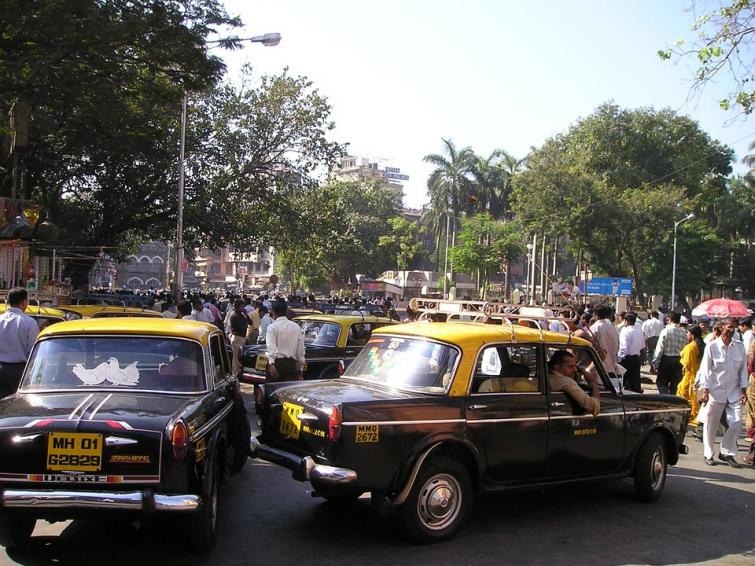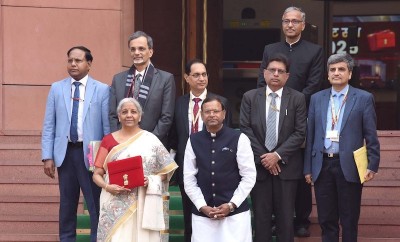
Total wealth of 63 Indian billionaires higher than last year’s Union Budget of India 2018-2019: Oxfam
New Delhi/IBNS: The combined total wealth of 63 Indian billionaires is higher than the total Union Budget of India for the fiscal year 2018-19 which was at INR 24,42,200 crore, a new report from Oxfam said ahead of the World Economic Forum (WEF) in Davos, Switzerland.
The world’s 2,153 billionaires have more wealth than the 4.6 billion people who make up 60 percent of the planet’s population, the report also showed.
“Our broken economies are lining the pockets of billionaires and big business at the expense of ordinary men and women. No wonder people are starting to question whether billionaires should even exist,” said Oxfam India CEO Amitabh Behar, who is in Davos to represent the Oxfam confederation this year.
Oxfam’s report, ‘Time to Care’ along with India focussed supplement, shows how our sexist economies are fuelling the inequality crisis —enabling a wealthy elite to accumulate vast fortunes at the expense of ordinary people and particularly poor women and girls:
The top 1% of Indians hold more than 4 times the amount of wealth held by 953 million people (or the bottom 70% of the population).
It would take a female domestic worker 22,277 years to earn what a top CEO of a Tech company makes in one year. With earnings pegged at INR 106 per second, the CEO would make more in 10 minutes than what the domestic worker would make in one year.
Women and girls put in 3.26 billion hours of unpaid care work each and every day—a contribution to the Indian economy of at least INR 19 lakh crore a year; which is 20 times the entire education budget of India in 2019 (INR 93,000 crores)
Direct public investments in the care economy of 2% of GDP would potentially create 11 million new jobs. This would make up for the 11 million jobs lost in 2018.
Global inequality is shockingly entrenched and vast and the number of billionaires has doubled in the last decade, despite their combined wealth having declined just in the last year.
“The gap between rich and poor can't be resolved without deliberate inequality-busting policies, and too few governments are committed to these,” Behar said.
“Women and girls are among those who benefit least from today’s economic system. They spend billions of hours cooking, cleaning and caring for children and the elderly. Unpaid care work is the ‘hidden engine’ that keeps the wheels of our economies, businesses and societies moving. It is driven by women who often have little time to get an education, earn a decent living or have a say in how our societies are run, and who are therefore trapped at the bottom of the economy,” added Behar.
Women do more than three-quarters of all unpaid care work. They often have to work reduced hours or drop out of the workforce because of their care workload. Across the globe, 42 percent of women cannot get jobs because they are responsible for all the caregiving, compared to just six percent of men.
Women also make up two-thirds of the paid ‘care workforce’. Jobs such as nursery workers, domestic workers, and care assistants are often poorly paid, provide scant benefits, impose irregular hours, and can take a physical and emotional toll.
The pressure on carers, both unpaid and paid, is set to grow in the coming decade as the global population grows and age. Climate change could worsen the looming global care crisis —by 2025, up to 2.4 billion people will live in areas without enough water, and women and girls will have to walk even longer distances to fetch it. 80 percent of indigenous people live in Asia and the Pacific, a region vulnerable to climate change.
The report shows governments are massively under-taxing the wealthiest individuals and corporations and failing to collect revenues that could help lift the responsibility of care from women and tackle poverty and inequality.
At the same time, governments are underfunding vital public services and infrastructure that could help reduce women and girls’ workload. For example, investments in water and sanitation, electricity, childcare, healthcare could free up women’s time and improve their quality of life.
“Governments created the inequality crisis —they must act now to end it. They must ensure corporations and wealthy individuals pay their fair share of tax and increase investment in public services and infrastructure. They must pass laws to tackle the huge amount of care work done by women and girls, and ensure that people who do some of the most important jobs in our society —caring for our parents, our children and the most vulnerable— are paid a living wage. Governments must prioritize care as being as important as all other sectors in order to build more human economies that work for everyone, not just a fortunate few,” said Behar.
Support Our Journalism
We cannot do without you.. your contribution supports unbiased journalism
IBNS is not driven by any ism- not wokeism, not racism, not skewed secularism, not hyper right-wing or left liberal ideals, nor by any hardline religious beliefs or hyper nationalism. We want to serve you good old objective news, as they are. We do not judge or preach. We let people decide for themselves. We only try to present factual and well-sourced news.







